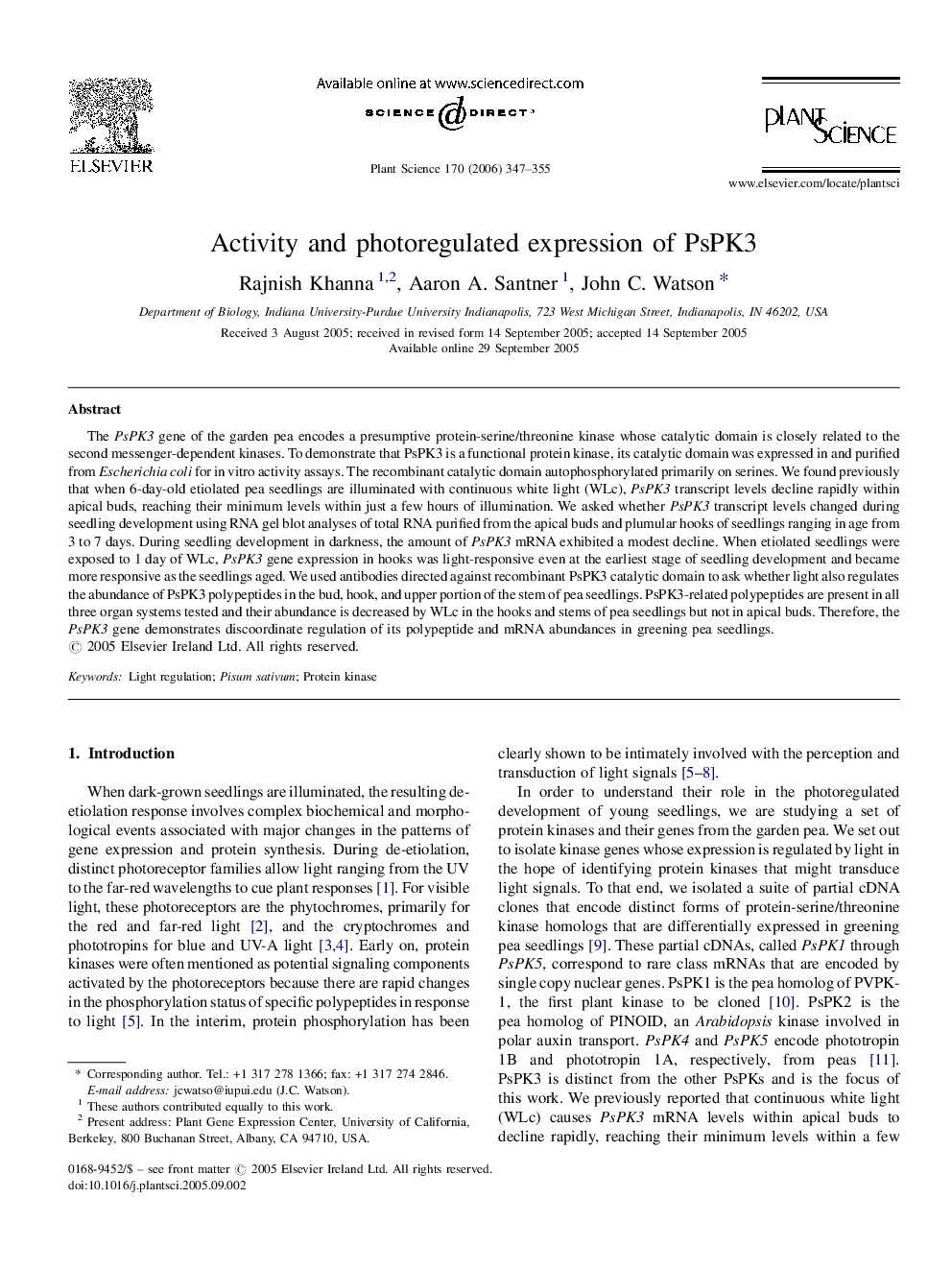| Article ID | Journal | Published Year | Pages | File Type |
|---|---|---|---|---|
| 2018632 | Plant Science | 2006 | 9 Pages |
The PsPK3 gene of the garden pea encodes a presumptive protein-serine/threonine kinase whose catalytic domain is closely related to the second messenger-dependent kinases. To demonstrate that PsPK3 is a functional protein kinase, its catalytic domain was expressed in and purified from Escherichia coli for in vitro activity assays. The recombinant catalytic domain autophosphorylated primarily on serines. We found previously that when 6-day-old etiolated pea seedlings are illuminated with continuous white light (WLc), PsPK3 transcript levels decline rapidly within apical buds, reaching their minimum levels within just a few hours of illumination. We asked whether PsPK3 transcript levels changed during seedling development using RNA gel blot analyses of total RNA purified from the apical buds and plumular hooks of seedlings ranging in age from 3 to 7 days. During seedling development in darkness, the amount of PsPK3 mRNA exhibited a modest decline. When etiolated seedlings were exposed to 1 day of WLc, PsPK3 gene expression in hooks was light-responsive even at the earliest stage of seedling development and became more responsive as the seedlings aged. We used antibodies directed against recombinant PsPK3 catalytic domain to ask whether light also regulates the abundance of PsPK3 polypeptides in the bud, hook, and upper portion of the stem of pea seedlings. PsPK3-related polypeptides are present in all three organ systems tested and their abundance is decreased by WLc in the hooks and stems of pea seedlings but not in apical buds. Therefore, the PsPK3 gene demonstrates discoordinate regulation of its polypeptide and mRNA abundances in greening pea seedlings.
